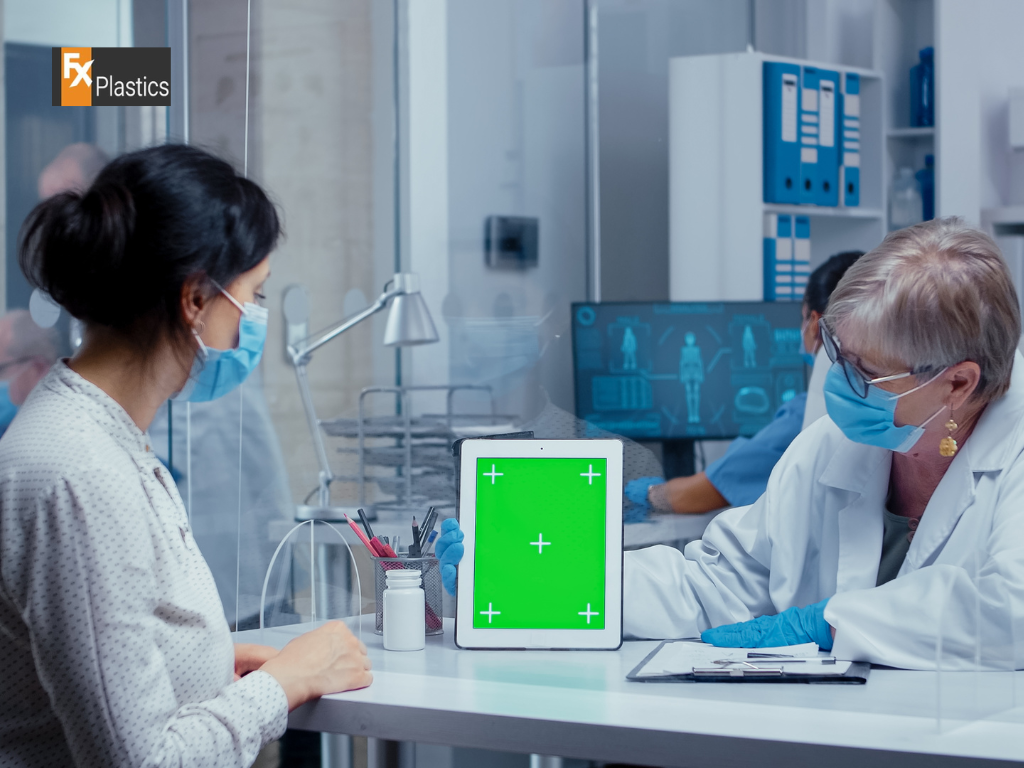The integration of hospital hygiene screens settings has become increasingly prominent, driven by the need to bolster infection control measures while simultaneously fostering a positive environment for patients. The adoption of these screens is reflective of a broader shift towards more holistic approaches to patient care and infection prevention.
The Growing Importance of Hygiene Screens in Hospitals
In the wake of global health challenges, hospitals have rapidly adapted by incorporating physical barriers, such as hygiene screens, as a fundamental part of their infection control protocols. These screens serve as a critical tool in minimizing the spread of airborne pathogens, thereby protecting both patients and healthcare workers.
Dual Role of Hygiene Screens in Infection Control and Patient Experience Enhancement
Hygiene screens, particularly those made from acrylic sheets, play a pivotal role beyond mere infection prevention. They are instrumental in enhancing the overall patient experience, offering a sense of safety and privacy while ensuring that hospitals remain welcoming spaces conducive to recovery and wellbeing.
Balancing Infection Control with Patient Privacy

The implementation of hygiene screens in hospitals must strike a delicate balance between effective infection control and the preservation of patient privacy and dignity.
The Necessity of Physical Barriers for Infection Prevention
Physical barriers, such as hospital hygiene screens made from acrylic sheets, are essential in hospital environments to prevent the transmission of infectious diseases. They act as a shield against airborne particles and droplets, which are common vectors for the spread of pathogens.
Strategies for Maintaining Patient Privacy and Dignity with Hygiene Screens in Place
To maintain patient privacy while utilizing hygiene screens:
- Placement Considerations: Careful planning of screen placement can ensure that patient areas remain private, even in open-plan wards. Screens should be positioned to offer visual privacy without isolating patients.
- Transparency and Design: Choosing acrylic sheets that provide a balance between transparency and opacity can help maintain a connection between patients and caregivers, while still offering a level of privacy. Designs that incorporate frosted or patterned acrylic can enhance privacy without sacrificing the light and open feel of patient spaces.
Enhancing Patient Comfort with Thoughtful Implementation
The design and placement of hospital hygiene screens significantly influence patient comfort, making these considerations central to their implementation.
Considerations for the Placement and Design of Hygiene Screens to Ensure Patient Comfort
- Ergonomic Design: Screens should be designed and placed in a way that complements the patient’s environment, allowing for easy interaction with healthcare providers and facilitating patient mobility within the space.
- Integration into the Environment: Screens should be seen as part of the overall design aesthetic, contributing positively to the ambiance of the patient area.
The Role of Material Choice in Creating a More Welcoming Environment
- Acrylic Sheets: The use of acrylic sheets in hygiene screens offers several advantages. Their clarity ensures that spaces do not become claustrophobic, preserving the open and airy feel of patient areas. Additionally, acrylic’s versatility allows for the creation of screens that are not only functional but also aesthetically pleasing, contributing to a more positive and comforting environment for patients.
Communication Barriers and Solutions
The introduction of hygiene screens in hospitals, while essential for infection control, presents new challenges in communication between healthcare providers and patients.
Identifying Potential Communication Challenges Posed by Hygiene Screens
- Reduced Audibility: The physical barrier can dampen sound, making it harder for patients and staff to hear each other clearly.
- Visual Barriers: Essential non-verbal cues in communication may be obscured by screens, especially if they are not fully transparent.
- Emotional Distance: The presence of a physical barrier can sometimes make patients feel more isolated or less connected to their caregivers.
Innovative Solutions to Facilitate Clear and Compassionate Communication Between Patients and Healthcare Providers
- Use of Technology: Implementing intercom systems or handheld devices that can facilitate clear audio communication without needing to raise voices or compromise the barrier’s effectiveness.
- Design Considerations: Opting for acrylic screens with sections that allow visibility of facial expressions and gestures to maintain non-verbal communication.
- Empathy Training: Encouraging healthcare workers to adopt verbal communication techniques that convey empathy and understanding, despite the physical barrier.
Patient Feedback and Continuous Improvement

Feedback from patients is invaluable in refining the use of hygiene screens to ensure they meet the needs of both patients and healthcare staff effectively.
The Importance of Gathering Patient Feedback on Hygiene Screen Implementation
- User Experience Insights: Patient feedback provides direct insights into how hygiene screens impact their hospital experience, from communication to comfort and privacy.
- Identifying Areas for Improvement: Feedback can highlight specific issues or challenges that may not be immediately apparent to hospital staff or management.
Incorporating Patient Suggestions to Improve the Effectiveness and Acceptability of Hygiene Screens
- Iterative Design: Using patient feedback to inform the design and placement of screens, ensuring they fulfill their protective role without detracting from the care experience.
- Adaptation to Needs: Modifying aspects of hygiene screen use based on feedback, such as adjusting the height, transparency, or mobility of screens to better suit patient needs.
Training Healthcare Staff for Optimal Use
Proper training for healthcare staff is crucial in maximizing the benefits of hygiene screens while minimizing any negative impacts on patient care.
Training Staff on Best Practices for Using Hygiene Screens Without Compromising Patient Interaction
- Communication Techniques: Training staff in verbal and non-verbal communication strategies to overcome barriers posed by screens.
- Operational Training: Ensuring all staff are proficient in the safe and effective use of screens, including moving and cleaning them as required.
Role-Playing and Empathy Training to Enhance Patient Care in the Presence of Physical Barriers
- Simulated Scenarios: Conducting role-playing exercises that simulate common patient interactions with screens in place to develop staff skills in delivering compassionate care.
- Empathy Development: Focusing on empathy training to help staff understand and mitigate the emotional impact of barriers on patients, fostering a more supportive and understanding care environment.
Future Directions in Hygiene Screen Design and Use
As the healthcare industry continues to evolve, so too do the approaches and technologies designed to enhance patient care and safety. Hygiene screens, a now integral component of hospital environments, are no exception, with future designs poised to further improve patient experiences and outcomes.
Emerging Trends in Hygiene Screen Design for Better Patient Experiences
Innovation in hygiene screen design is focused on creating solutions that are not only effective in preventing infection but also in enhancing the patient’s experience. Some emerging trends include:
- Adjustable Transparency: Development of screens that can adjust their opacity, allowing for privacy when needed while maintaining the option for clear visual communication.
- Lightweight and Flexible Materials: Utilizing materials that are not only durable and easy to clean but also lightweight and flexible, enabling easy reconfiguration of spaces as patient needs change.
- Incorporating Art and Design: Using screens as a medium for art, bringing warmth and comfort to clinical settings, and contributing to a healing environment.
Potential for Technology Integration to Enhance Patient Comfort and Safety
Technology integration represents a significant frontier for the development of hygiene screens, with potential applications including:
- Touchless Communication Systems: Embedded systems that facilitate easy communication between patients and healthcare providers without the need to approach or touch the screen.
- Health Monitoring Features: Screens equipped with health monitoring capabilities, such as temperature sensors or oxygen saturation detectors, allowing for passive health checks that respect patient privacy.
- Interactive Entertainment and Information: Screens that double as interactive panels, providing patients with access to entertainment, health information, or direct communication with their care team.
Conclusion
As we look to the future, the commitment to refining the use and design of hygiene screens remains steadfast. By embracing emerging trends and integrating new technologies, healthcare facilities can continue to enhance patient comfort and safety. This ongoing innovation and adaptation in hygiene screen design and use are vital to ensuring that hospitals can provide the highest standards of care while navigating the challenges of infection control. The journey toward better healthcare environments is ongoing, with hygiene screens playing a crucial role in shaping the future of patient care and hospital design.

